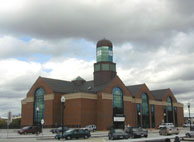Unlike in larger cities, where public transit usage crosses more demographic lines, public transit use in Albany appears to me (yes, I am a regular rider) the domain primarily of those of relatively modest means (though the recent rises in gas prices are making transit more attractive those with higher incomes). For this reason, in addition to the usual reasons public transit ridership should be encouraged — conservation of energy, reduction of traffic congestion, decrease in demand for downtown land to be used for parking facilities — CDTA’s recent announcement that it would be seeking a 50% increase in the single-ride fare is distressing. Distressing, yes, but in this enviornment of rising costs for everything, especially fuel, necessary?
Rochester, an upstate area comparable to Albany, recently lowered its fare. True, it reduced service, but service reductions also are part of CDTA’s plan.
Even if you believe CDTA’s most recent budget request, which posits enough revenue from the Rensselaer Rail Station to cover its expenses, you have to wonder whether a more appropriately-scaled station, costing far less than the $53 million spent on the white elephant that was built, wouldn’t have left tens of millions available for maintaining the transit fare, maintaining free parking at the rail station (parking fees account for the vast bulk of station revenues) or both.
I hope CDTA will re-focus itself on its core mission of providing transit services. I see potential for increasing ridership by improving bus service between the rail station and downtown (now totally confusing because the different routes stop at different places and avoid actually entering the station property), as well as the airport and downtown (now inadequately served by the Central Avenue line and the meandering and painfully slow Shuttle-Fly). Every day, hundreds of people enter the Albany area without cars from these two locations. A large number of these are heading downtown for the day, without a lot of luggage, and could be transit customers if the service were frequent and reliable. Increased patronage on such routes would generate revenue that could support more frequent service, which would benefit the local residents who ride those routes.




 Posted by capitolview
Posted by capitolview